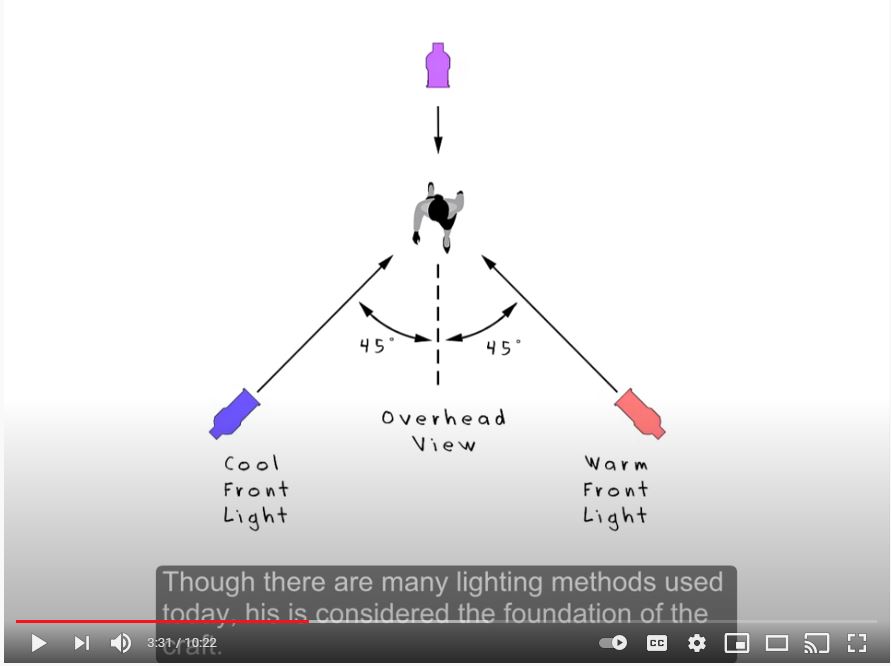This YouTube video by Matt Kitzer shows why a lighting design using the McCandless Method provides natural lighting for Drama. https://www.youtube.com/watch?v=UN18kSmSNdk
This video was completed during the coronavirus quarantine.
Excellent graphics and visualization.

Bill Williams Stage Lighting Design Edition 2.d Copyright (c) 1997-1999 has summarised the McCandless Method https://billwilliams.ca/resources/sld/sld-200.htm
1.) MCCANDLESS METHOD
Although there may be no ‘one’ method of lighting design, there is however a systematic approach that was proposed by Stanley McCandless (Yale University School of Drama 1925-1964). It is this approach that is the foundation for modern stage lighting design today.
2.) ACTING AREA LIGHTING
McCandless proposed that the stage setting be broken up into a number of ACTING AREAS, each with two (2) fixtures. The fixtures were to be positioned overhead as front lights at approximately 90 degrees to the area. Further the fixtures were to be located approximately 45 degrees horizontally. Next McCandless proposed that each lamp have a different color filter, a ‘warm’ from one side, a ‘cool’ from the other. Each area was also (ideally) given individual dimmer control.
An ‘open’ stage would be typically broken into 9 areas (more or less as required), each having an 8-12 foot diameter. Areas might be arranged; 3 downstage, 3 center stage and 3 upstage.
The two fixtures provided VISIBILITY to the actor. The dimmer controls allowed areas to darken or brighten as needed, providing SELECTIVE FOCUS, COMPOSITION and MOOD to the overall stage picture. The position of the two fixtures, allowed an actor to ‘play’ to either his right or to his left, and still be in a KEY light. The angle between the fixtures provides excellent plasticity and form to the human face. The opposing warm and cool colors assist in providing interest, contrast and naturalistic lighting.
3.) BLENDING and TONING
Light the actors first for visibility, then light the surroundings separately for mood and atmosphere, was the McCandless’s approach. Sometimes no additional lighting is required, letting the ‘flare’ from the acting areas illuminate the walls of a set. Alternately, scenery may need WASH or FLOOD lighting to help integrate and blend it into the entire lighting picture.
4.) BACKGROUNDS and BACKDROPS
Backgrounds, backings, backdrops and cycloramas should all be illuminated separately from the actor and from the scenery.
5.) EMPHASIS and SPECIALS
McCandless recommended additional fixtures (if needed);
(a) to provide ‘acting area specials’ (entrances, furniture, etc).
(b) to provide motivation (sunlight, moonlight, firelight).
(c) to provide projection or effects.
Page updated 24 August 2023